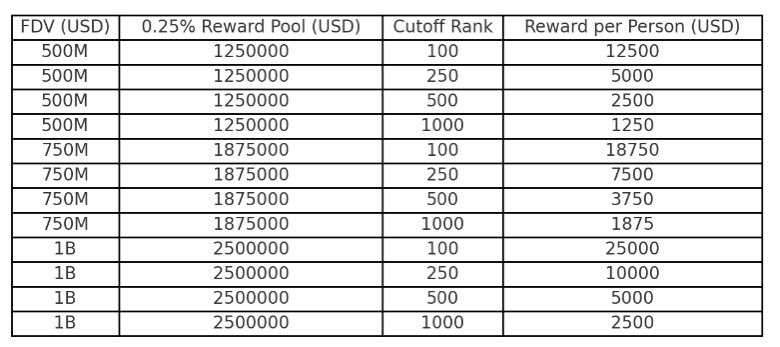The Intersection of AI and Human Insight: Revolutionizing Decision-Making
The Dawn of a New Era
Imagine a world where artificial intelligence (AI) doesn’t just crunch numbers but understands the nuances of human behavior, market trends, and strategic planning. This isn’t a distant dream; it’s the reality of today, where AI is being powered by real human insights to drive smarter decisions across various sectors, from finance to defense. This integration is not just about automating tasks but about creating systems that learn, adapt, and make decisions that align with human intuition and strategic thinking.
In this new era, AI is no longer a standalone tool but a collaborative partner. It leverages the strengths of human insight to make more informed and contextually relevant decisions. This synergy is transforming industries, making processes more efficient, and enabling more accurate predictions. The fusion of AI and human insight is not just a technological advancement but a paradigm shift in how we approach decision-making.
Harnessing Human Insights for AI
Data-Driven Decisions
At the heart of this revolution is data. Data is the fuel that powers AI, and the more accurate and insightful the data, the more effective the AI. In finance, for instance, AI can analyze market trends, predict stock movements, and even identify fraudulent activities. But to do this effectively, AI needs to understand the context behind the data. This is where human insights come in. Financial analysts, traders, and economists provide the contextual understanding that AI needs to make accurate predictions and decisions.
For example, AI algorithms can identify patterns in stock prices, but they might miss the subtle signs of an impending market crash. Human analysts, with their experience and intuition, can provide insights into economic indicators, geopolitical events, and market sentiment that AI might overlook. This combination of data-driven analysis and human intuition leads to more robust and reliable decision-making.
Strategic Automation in Defense
In the defense sector, AI is being used to automate strategic planning and decision-making. For example, the Air Force uses AI to analyze vast amounts of data to predict enemy movements, optimize resource allocation, and even automate certain combat functions. However, the effectiveness of these systems depends on the quality of the data and the algorithms that process it. Human insights are crucial in ensuring that the data is accurate and that the algorithms are designed to make decisions that align with strategic goals.
In defense, AI systems can process enormous amounts of data to identify potential threats and optimize responses. However, the strategic decisions made by these systems need to be grounded in human judgment. Military strategists and analysts provide the contextual understanding and ethical considerations that AI systems lack. This collaboration ensures that AI-driven decisions are not only efficient but also aligned with broader strategic objectives and ethical standards.
The Role of Human Insights in AI
Contextual Understanding
One of the biggest challenges in AI is understanding context. AI systems are great at processing data and identifying patterns, but they often struggle with understanding the context behind the data. This is where human insights come in. Humans can provide the contextual understanding that AI needs to make accurate predictions and decisions. For example, in finance, human analysts can provide insights into market trends, economic indicators, and even geopolitical events that AI might miss.
Contextual understanding is crucial in fields like healthcare, where AI can analyze patient data to predict diseases. However, the diagnosis and treatment plans need to consider the patient’s medical history, lifestyle, and personal preferences. Human doctors provide this contextual understanding, ensuring that AI-driven recommendations are tailored to the individual patient’s needs.
Ethical and Strategic Decision-Making
AI systems are designed to make decisions based on data and algorithms, but they often lack the ethical and strategic understanding that humans possess. Human insights are crucial in ensuring that AI systems make decisions that are not only accurate but also ethical and strategic. For example, in defense, human insights can ensure that AI systems make decisions that align with strategic goals and ethical standards.
In autonomous vehicles, AI systems can process sensor data to make driving decisions. However, these decisions need to consider ethical dilemmas, such as prioritizing the safety of passengers over pedestrians. Human insights are essential in programming these ethical considerations into AI systems, ensuring that they make decisions that are not only efficient but also morally sound.
The Future of AI and Human Insight
Integrating Human Insights into AI
The future of AI lies in its ability to integrate human insights into its decision-making processes. This means creating systems that not only process data but also understand the context behind the data. It means creating systems that make decisions based on ethical and strategic considerations. It means creating systems that learn and adapt based on human feedback.
In customer service, AI-powered chatbots can handle routine queries, but they often struggle with complex or emotionally charged issues. Integrating human insights into these systems can improve their ability to understand and respond to customer needs. For example, natural language processing (NLP) can be enhanced with human feedback to better understand the nuances of language and emotion, leading to more effective and empathetic interactions.
The Role of Human-AI Collaboration
The future of AI is not about replacing humans but about collaborating with them. AI systems can process vast amounts of data and identify patterns that humans might miss, but they need human insights to make accurate and strategic decisions. The future lies in creating systems that leverage the strengths of both AI and humans to make better decisions.
In creative fields like art and music, AI can generate new compositions or designs, but it often lacks the emotional depth and creativity that humans possess. Collaborating with AI, artists and musicians can explore new creative avenues, combining the precision of AI with the emotional resonance of human creativity. This collaboration can lead to innovative and groundbreaking works that push the boundaries of what is possible.
Conclusion: Embracing the Revolution
The integration of AI and human insights is revolutionizing decision-making across various sectors. From finance to defense, AI systems are being powered by real human insights to drive smarter decisions. This integration is not just about automating tasks but about creating systems that learn, adapt, and make decisions that align with human intuition and strategic thinking.
As we move forward, it is crucial to embrace this revolution and create systems that leverage the strengths of both AI and humans to make better decisions. The future is here, and it is powered by the integration of AI and human insights. Join the revolution and be a part of this exciting journey.
References
[1]. Ichiban. (2025, June 18). Powering AI with real human insights! @getoro_xyz data drives smarter decisions in finance, defense, and beyond – think market analysis on Wall Street or strategic automation in the Air Force. Join the revolution! pic.twitter.com/H3tgGMn5rp [Tweet]. Twitter. Powering AI with real human insights! @getoro_xyz data drives smarter decisions in finance, defense, and beyond – think market analysis on Wall Street or strategic automation in the Air Force. Join the revolution! (twitter.com)
[2]. Bankr. (2025, June 18). i’ve picked out two coins on base for you: keeta ($KTA) and aerodrome ($AERO).here’s the rundown on both:keeta ($KTA):* technical analysis: the long-term trend is up, but it’s in a short-term correction. it’s finding support around $0.75-$0.79. a break above $0.95 could… pic.twitter.com/mIYONIoZvu [Tweet]. Twitter. i’ve picked out two coins on base for you: keeta ($KTA) and aerodrome ($AERO).here’s the rundown on both:keeta ($KTA):* technical analysis: the long-term trend is up, but it’s in a short-term correction. it’s finding support around $0.75-$0.79. a break above $0.95 could… (twitter.com)
[3]. Mamorez. (2025, June 17). Survey Note: Detailed Analysis of SYL – Dawn of EastSYL – Dawn of East (SYL) emerges as a fascinating project within the NFT ecosystem, particularly as part of the play-to-earn (P2E) trading card game SYLTARE. This section provides a comprehensive overview, drawing from… pic.twitter.com/7NY9m6NtwE [Tweet]. Twitter. Survey Note: Detailed Analysis of SYL – Dawn of EastSYL – Dawn of East (SYL) emerges as a fascinating project within the NFT ecosystem, particularly as part of the play-to-earn (P2E) trading card game SYLTARE. This section provides a comprehensive overview, drawing from… (twitter.com)
[4]. JB. (2025, June 17). 🏞️ Surface frames are the dominant, often-unquestioned interpretive structures through which individuals or societies understand information, events, or symbols. They are the “default lenses” 👁️ that filter perception and meaning before deeper layers of analysis or recursion are… pic.twitter.com/ed0CKABBZP [Tweet]. Twitter. 🏞️ Surface frames are the dominant, often-unquestioned interpretive structures through which individuals or societies understand information, events, or symbols. They are the “default lenses” 👁️ that filter perception and meaning before deeper layers of analysis or recursion are… (twitter.com)





